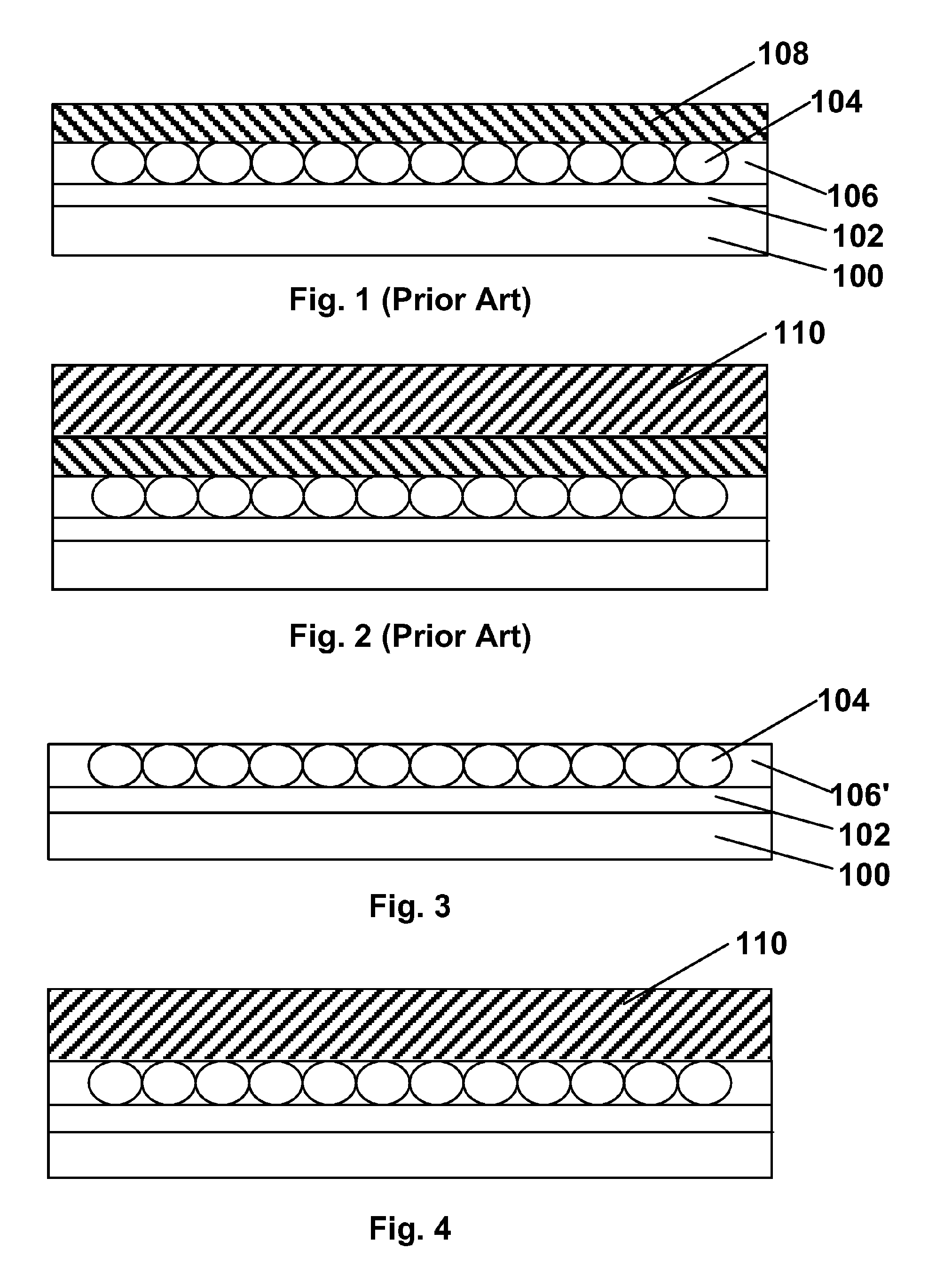Electro-optic displays, and processes for the production thereof
a technology of optical displays and optical displays, applied in optics, static indicating devices, instruments, etc., can solve the problems of inadequate service life of these displays, preventing their widespread use, and gas-based electrophoretic media being susceptible to the same types of problems
- Summary
- Abstract
- Description
- Claims
- Application Information
AI Technical Summary
Benefits of technology
Problems solved by technology
Method used
Image
Examples
example
[0140]Dual particle opposite polarity electrophoretic capsules containing polymer-coated titania and carbon black particles in an aliphatic hydrocarbon suspending fluid and with gelatin / acacia capsule walls were prepared substantially as described in Example 30 of the aforementioned 2002 / 0185378. These capsules were then mixed at a weight ratio of 1:1 (capsules / binder solids basis) with a custom polyurethane latex binder, and the resultant slurry slot coated, substantially as described in this Example 30, on to a 5 mil (127 μm) poly(ethylene terephthalate) (PET) film coated on one surface with ITO, the slurry being coated on to the ITO-covered surface, and cured to produce a final capsule / binder layer comprising essentially a monolayer of capsules and 15-30 μm thick. The resultant capsule-coated film was essentially an FPL of the present invention except that it lacked a release sheet which was not needed since the coated film was used immediately as described below.
[0141]The capsul...
PUM
| Property | Measurement | Unit |
|---|---|---|
| diameter | aaaaa | aaaaa |
| thickness | aaaaa | aaaaa |
| thickness | aaaaa | aaaaa |
Abstract
Description
Claims
Application Information
 Login to View More
Login to View More - R&D
- Intellectual Property
- Life Sciences
- Materials
- Tech Scout
- Unparalleled Data Quality
- Higher Quality Content
- 60% Fewer Hallucinations
Browse by: Latest US Patents, China's latest patents, Technical Efficacy Thesaurus, Application Domain, Technology Topic, Popular Technical Reports.
© 2025 PatSnap. All rights reserved.Legal|Privacy policy|Modern Slavery Act Transparency Statement|Sitemap|About US| Contact US: help@patsnap.com



